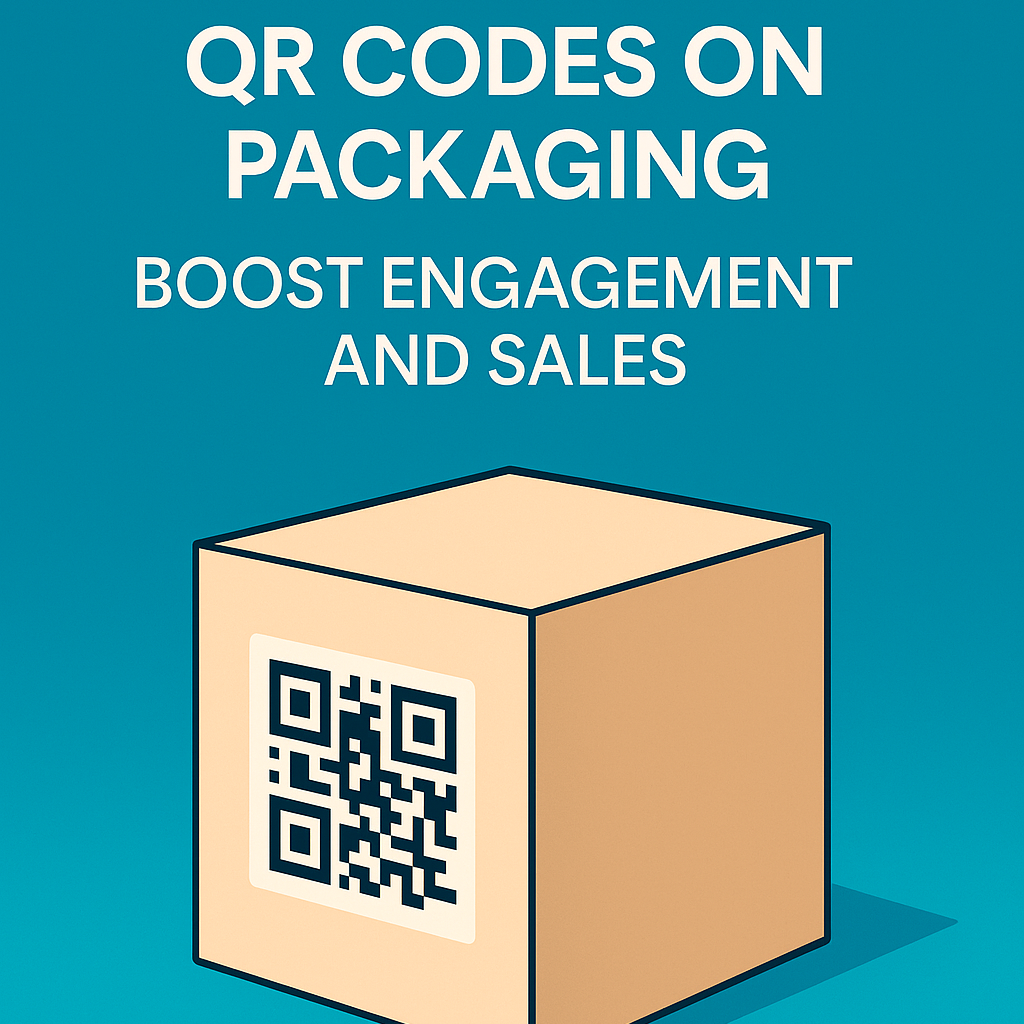Introduction
Your product packaging is doing half the job it could be doing. Every box, bottle, or bag sitting on a shelf is a missed opportunity—unless it includes a QR code on packaging. What was once a simple black-and-white square has evolved into a powerful bridge between physical products and digital experiences. According to Packaging Dive, citing Statista, nearly half of U.S. consumers have scanned a product QR code at least once. This isn’t a trend—it’s a fundamental shift in how consumers interact with brands. QR codes transform static labels into dynamic marketing channels. Moreover, they drive loyalty programs, educate buyers, and create measurable engagement that traditional packaging simply cannot deliver. For brands ready to transform packaging from cost center to revenue driver, implementing QR codes is no longer optional.How QR Codes on Packaging Transform the Customer Journey
Packaging has always been the first physical touchpoint between your product and the consumer. Whether it’s on a retail shelf or inside an e-commerce delivery box, it sets expectations for quality, trust, and relevance. However, with QR codes, packaging extends beyond that first impression. A single scan can guide shoppers through the entire customer journey:- Awareness: Share brand stories, sustainability commitments, or campaign content.
- Purchase: Deliver real-time discount codes or promotional offers.
- Loyalty: Connect buyers to exclusive rewards, communities, or VIP programs.
Strategic Use Cases for QR Codes Across Industries
Consumer Packaged Goods (CPG) and Food & Beverages
In CPG, where margins are razor-thin and competition is fierce, QR technology brings packaging to life. A cereal box can deliver family recipes, sustainability stories, or contests that encourage repeat purchases. Additionally, beverage companies use these codes to connect cans and bottles directly to campaigns—Coca-Cola has launched seasonal packaging where scanning unlocks AR experiences and curated music playlists. The result? Higher engagement and stronger brand recall at the moment of purchase.Cosmetics and Personal Care
Beauty and personal care brands serve consumers hungry for tutorials, ingredient transparency, and authenticity. L’Oréal introduced packaging QR codes that guide customers to video tutorials, shade matchers, and verified reviews. In a market plagued by counterfeits, these codes also serve as proof of authenticity—reassuring customers they’re buying genuine products. For beauty brands, packaging QR codes deliver education and trust simultaneously.Beverages and Alcohol
The alcohol sector has embraced gamification through packaging technology. Brands like Johnnie Walker and Budweiser link bottles to exclusive cocktail recipes, mixology tutorials, and limited AR content. These experiences deepen consumer loyalty while supporting responsible drinking campaigns. When your bottle becomes a portal to premium content, consumers remember your brand long after the last sip.Design and Placement Best Practices for Packaging QR Codes
Not every QR code generates scans. In fact, design, placement, and usability matter just as much as the campaign behind it.Technical Requirements
- Size: Minimum 2×2 cm ensures reliable scanning.
- Contrast: Dark codes on light backgrounds remain the gold standard.
- Quiet zone: Leave clear margins to avoid scanning errors.
- Surface: Flat surfaces typically outperform curved or textured labels.
Strategic Elements
- Call-to-Action: Clear wording like “Scan to unlock rewards” dramatically outperforms generic codes.
- Brand integration: Codes should enhance—not disrupt—your packaging design.
- Mobile optimization: Landing pages must load instantly and display perfectly on smartphones.
Want to create QR codes that convert?
VISU makes it easy to design, deploy, and track high-performance QR campaigns that turn scans into sales.Post-Purchase Engagement Through Packaging QR Codes
The real power of packaging QR codes emerges after the sale. Beyond driving the initial purchase, they create ongoing touchpoints that extend customer lifetime value:Warranty and Onboarding
Electronics brands use packaging QR codes to simplify warranty activation and provide instant access to setup tutorials.Recycling and Sustainability
Circular economy initiatives encourage consumers to dispose of packaging responsibly—QR codes link to recycling instructions and return programs.User-Generated Content (UGC)
Fashion and beverage brands invite customers to share photos or participate in hashtag challenges triggered by a packaging scan.Loyalty Rewards
These codes connect products directly to brand loyalty apps, ensuring repeat visits and purchases. As a result, this approach transforms packaging from a one-time container into a platform for continued engagement. The relationship doesn’t end at checkout—it begins there.Measuring ROI from Packaging QR Code Campaigns
One of the most compelling advantages of packaging QR codes is measurability. In contrast to traditional print, every scan generates actionable data:- UTM tracking and cohorts: Identify where and when consumers engage.
- Customer segmentation: Frequent scanners become candidates for VIP campaigns.
- Cross-channel attribution: Connect offline sales to digital performance.
Beyond Marketing: Sustainability and Compliance with QR Codes
These codes serve functional roles beyond sales and engagement. As sustainability regulations tighten and consumers demand transparency, packaging QR codes can host:- Full ingredient disclosure.
- Recycling and return program instructions.
- Certifications for fair trade, organic sourcing, or environmental compliance.
Case Studies and Market Examples
Coca-Cola
Seasonal AR campaigns via packaging QR codes boosted social media engagement and drove limited-edition product sales.L’Oréal
Tutorial-driven packaging QR codes increased product usage satisfaction and strengthened brand trust among first-time buyers.Nestlé
QR-enabled nutrition transparency aligned with consumer demand for healthier, more transparent food options.Craft Beer Brands
Small breweries use QR codes to connect customers directly with founders’ stories, brewery tours, and community events—building loyalty one scan at a time. These examples demonstrate how packaging codes scale across both global giants and niche players. The technology is accessible, measurable, and effective regardless of company size.Closing Reflection
QR codes on packaging represent more than a scanning feature—they mark a fundamental shift in how brands build relationships. In essence, every package can now act as a portal to education, entertainment, or exclusive rewards. For consumers, this means convenience, transparency, and trust. For brands, it means measurable engagement and higher sales. And for forward-thinking marketers, it means transforming packaging from a static object into a dynamic, revenue-generating touchpoint. With VISU, this evolution goes one step further: every scan becomes an opportunity not just to connect, but to reward. Turn attention into action, scans into sales, and customers into loyal advocates.Ready to turn your packaging into a revenue channel?
Use VISU to turn every scan into measurable engagement, repeat purchases, and real-time insights from your shelves.FAQ: QR Codes on Packaging
Are QR codes on packaging safe?
Yes — when they point to verified domains and HTTPS URLs, packaging QR codes offer a secure, trustworthy experience. Using branded short domains and dynamic links further reduces the risk of malicious redirects.
What’s the ideal size for packaging QR codes?
As a rule of thumb, at least 2×2 cm with clear margins ensures smooth scanning on most smartphone cameras. For posters, shippers or fridge-distance viewing, scale up accordingly and always test before going to print.
Do packaging QR codes really boost loyalty?
Absolutely. When QR codes connect products to rewards, communities and personalized content, they encourage repeat visits and purchases — turning one-time buyers into engaged members of your ecosystem.
How do brands measure ROI from packaging QR codes?
Brands track scan volume, UTM parameters, cohort behavior and repurchase rates tied to packaging campaigns. Comparing these metrics against production and media costs reveals the true ROI of each QR activation.
Can small brands use packaging QR codes effectively?
Yes. QR codes are low-cost and highly scalable, making them ideal for emerging brands that want to add storytelling, rewards and direct customer relationships without changing their entire packaging line.


